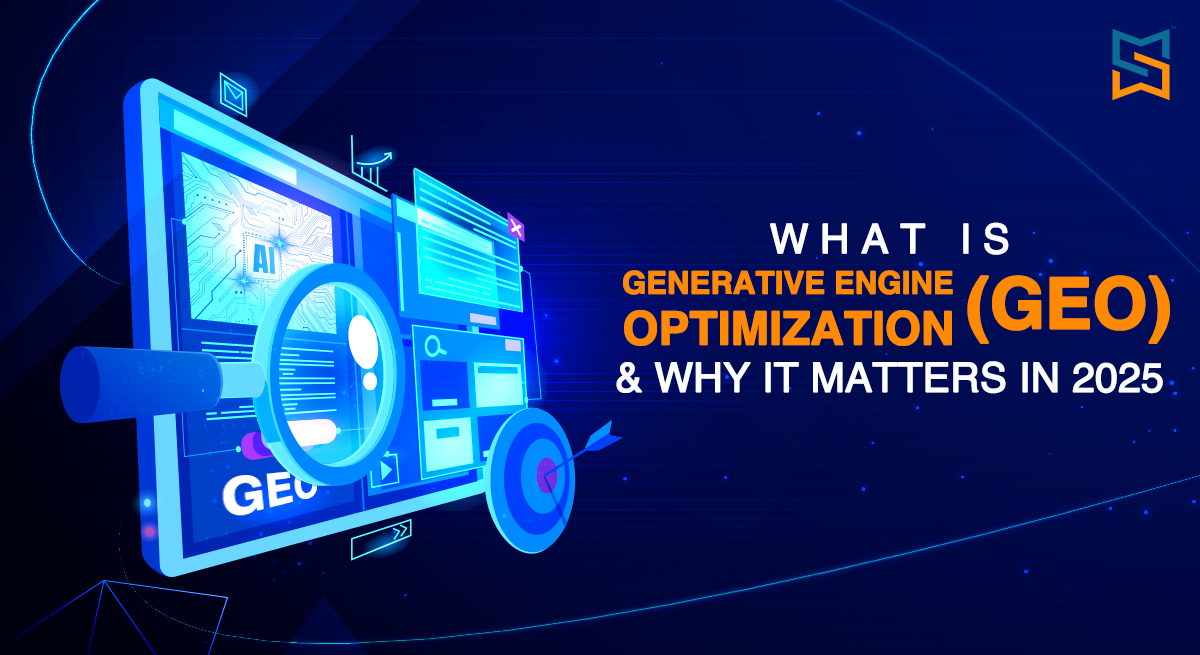

The digital world never stays the same. It evolves fast, and just when you think you’ve figured things out, something new comes along. In 2025, one of the most exciting trends is Generative Engine Optimization (GEO). This shift is rapidly changing how businesses approach content creation, SEO, and user engagement. GEO is more than just SEO’s next step—it’s a whole new way to ensure your content is front and centre when AI-driven engines like Google Assistant or Siri answer a question. Unlike traditional SEO, where you focus on ranking for keywords, GEO aims to get your content placed as the answer in these instant AI-generated responses. It’s a smarter way to make sure your brand is visible in a world where everyone expects immediate results. If you’re a local business, Geo digital marketing using GEO can be a game-changer in boosting your visibility and driving traffic.
In this blog, we’ll explore the basics of GEO, why it matters for your digital marketing efforts, and how you can adapt your strategy to take advantage of this powerful trend. Whether you're running a small business or a large enterprise, understanding GEO will give you a competitive edge.
How GEO Works: Key Points to Know
- GEO Focuses on AI-Generated Answers: The main difference between GEO and traditional SEO is that GEO is about positioning your content as the direct answer that AI systems will pull up. AI-powered assistants—like Siri, Google Assistant, and Alexa—are increasingly providing users with direct answers to their questions without needing to click on any links. This is where GEO comes in. Rather than simply aiming to rank your content on a search engine results page, you now need to optimize your content to become the direct answer that these engines deliver. The more accurate and relevant your content, the higher the chances of it being chosen by AI systems to answer user queries.
- Simplified, Direct Content: To ensure that your content stands out in the crowded digital space, it needs to be clear, concise, and to the point. When you're optimizing for GEO, think of it as creating content that answers questions in the simplest possible way. Forget about long paragraphs or complicated language. AI engines prefer structured and easy-to-read content that gives quick answers. That means using formats like FAQs, lists, and bullet points. Simple and direct language will not only help you rank but also get picked by AI as the best response to a question. Short, sharp answers are key.
- Improved User Experience: At the heart of GEO is improving the user experience. Customers don’t spend their time for looking for answers anymore. With AI-powered responses, users expect the information they need immediately, and without navigating through multiple pages. By ensuring your content is optimized for Local SEO and designed to answer common questions, you make it more likely that your content will be chosen as the answer rather than just another search result. This improves the overall user experience, as it reduces the effort a user has to make to find what they need.
- GEO Enhances Voice Search Optimization: With voice search rapidly gaining popularity, GEO is becoming even more essential. Think about it: when you speak to your phone or smart speaker, you don’t get a list of results—you get a single answer. This is where voice search optimization comes into play. If your content isn’t optimized to provide quick, direct answers, it likely won’t be picked by these voice assistants. GEO allows businesses to take advantage of the growing voice search trend. Optimizing for GEO helps ensure your content is the one users hear when they ask a question out loud. This is especially important for businesses with a local presence, as voice searches are often related to “near me” queries—something that GEO can help you dominate.
- Long-Term Benefits for Local Businesses: For local businesses, GEO offers long-term benefits that should not be overlooked. When combined with digital marketing for local businesses, GEO can position your brand as the go-to solution in a specific geographic area. For example, if a person asks, “What’s the best coffee shop in [City]?” your business could be the answer if your optimization is proper. By focusing on GEO, your business becomes part of the digital assistant’s answer engine. Whether it’s a “best restaurant nearby” search or a “plumber in my area” inquiry, GEO gives your business the opportunity to be featured as the most relevant answer.
Conclusion
As we head into 2025, Generative Engine Optimization (GEO) is quickly becoming one of the most important trends in digital marketing. It’s the next step in the evolution of SEO, designed to make your content the direct answer in AI-driven responses. As businesses shift from just ranking on search engine results pages to being picked as the AI’s answer, GEO will play a crucial role in improving visibility and engagement. The beauty of GEO is that it’s all about giving users exactly what they want—clear, concise, and immediate answers. For local businesses, GEO provides a unique opportunity to stand out and be seen by more customers through voice search and digital assistants.
If you want to be found first, it’s time to get friendly with GEO
Author: Sonali Jadhav (SEO Manager)


